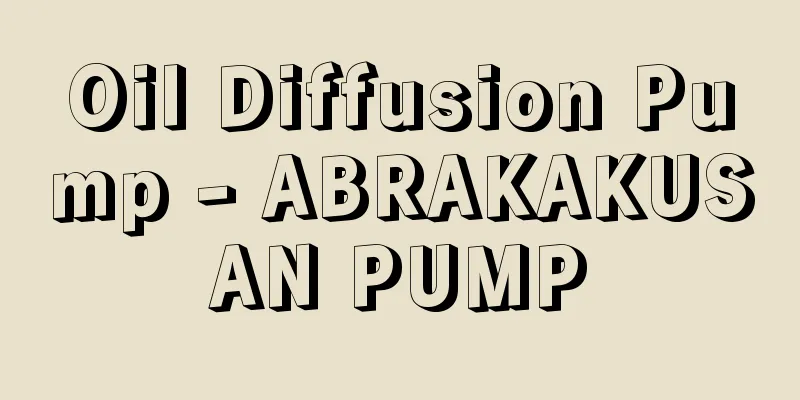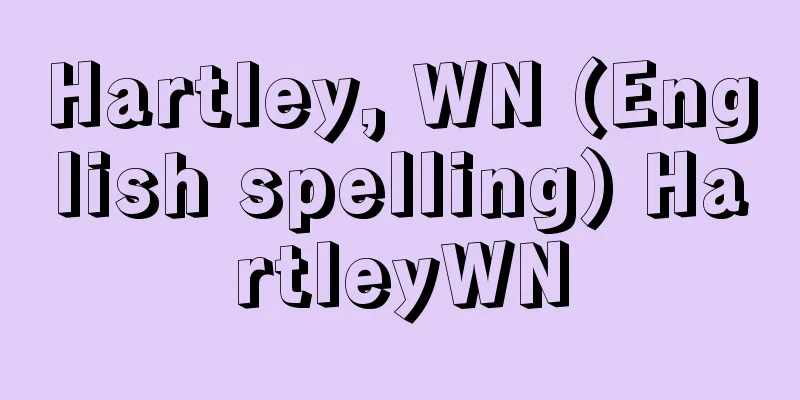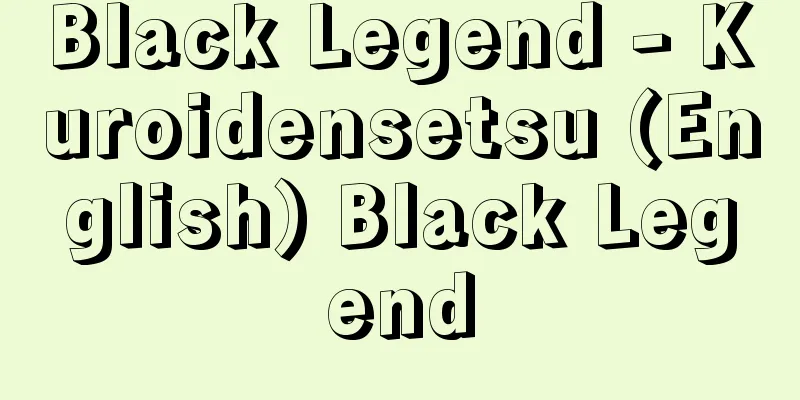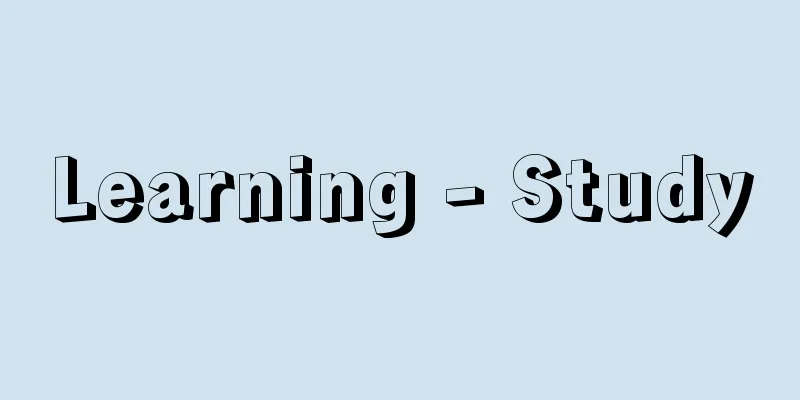Public finance - science of public finance
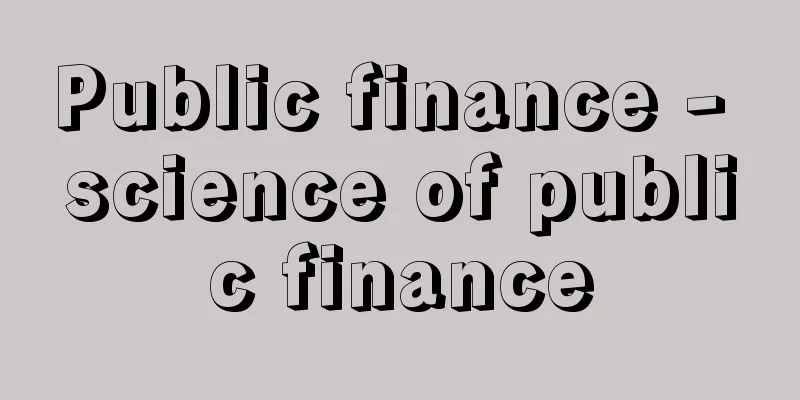
|
It is a branch of social science that studies the economic activities of the state and local governments. The state and local governments are outside the private economy, and enforce policies with coercive power, while the private economy adjusts those policies to its own advantage. Public finance has two aspects that reflect this nature of finance. One is the study of how the private economy responds to the policies of external policy actors. For example, if the state imposes a new consumption tax, how much will the production and consumption of the taxed product change, and how much will the price of this product rise as a result? This type of research can be called public finance research as applied economics. The other is the study of the policy-making process of policy actors outside the private economy. The entity that implements fiscal policy is the public authority. However, especially under a democratic system, public authority is formed through political processes such as elections for politicians by the people and voting for decision-making in the Diet. Therefore, it is necessary to study what decision-making rules (for example, simple majority vote) the people and their representatives use in the political decision-making process, and what kind of budget is likely to be adopted under those decision-making rules. Public finance must also address these political decision-making processes. [Udagawa Akihito] The formation of public financeIn the 18th century, the so-called classical economists, such as A. Smith and D. Ricardo, who were at the beginning of economics, took up the role of the state or the head of state in the final chapters of their works. However, their approach was not to discuss the objective impact of the policies of the state or the head of state on the national economy, but to argue, from the standpoint of liberalism, what the minimum necessary fiscal expenditures are, and what the tax system would be to cover them with the least damage to the accumulation capacity of the national economy. This lack of differentiation between empirical theory and policy theory was sorted out by A. Marshall, the father of modern economics, and the impact of fiscal balance on the national economy was rigorously discussed using economic theory. The advances in demand and supply analysis in economic theory during this period provided an ideal tool for analyzing the impact, especially pass-through and effects, of taxes and government subsidies, and it became so popular that economic analysis of finances now refers to the economic effects of tax pass-through and the like. [Udagawa Akihito] The impact of the Keynesian revolutionThe Great Depression occurred in the 1930s, which led to a new trend in analytical methods in economics. In 1936, Keynes's "The General Theory of Employment, Interest and Money" was published, and the Keynesian Revolution swept through economics. The Keynesian Revolution also had a huge impact on public finance. The aim of Keynesian economics was to examine why unemployment remains even in equilibrium under capitalism, and to emphasize, through a simple and clear macro model, that the private economy has no way to escape unemployment on its own, and that there is no other way than to rely on fiscal and monetary policies, especially fiscal policies. The Keynesian Revolution changed the policy thinking of not only all economists but also many politicians in capitalist countries. Keynesian economics, which placed such emphasis on fiscal policy, was the greatest blessing for fiscal science. Keynes' ideas provided a prescription for overcoming the recession of the 1930s and for fiscal management after World War II, and economists and fiscal science scholars added new ideas to Keynes' macro model. Analysis of the effect of fiscal balance on national income and employment levels became a central issue in postwar applied economics in fiscal science, similar to the tax pass-through theory of Marshall's time. [Udagawa Akihito] Modern FinanceIn the 1950s, public finance as an applied economics field developed independently in the economic analysis of taxes, which had been analyzed using the methods of traditional microeconomics, the theory of fiscal policy for economic stability based on macroeconomics (Keynes called fiscal policy for this purpose fiscal policy in particular), and the policy theory of modern economics on what kind of fiscal policy is desirable for consumers. As a result, there was a need to re-systematize public finance as an applied economics field. This task was accomplished by R. A. Musgrave's Theory of Public Finance (1959). Musgrave's systematization was essentially normative or policy-theoretic. He assumed a priori that the modern state has three fiscal tasks. The first task is to achieve and maintain full employment. In other words, the government must implement a stabilization policy. The second task is to implement a redistribution policy to achieve an income distribution that the society of the time considers ethically "just." The third task is to provide public goods according to the preferences of the people. One of the important points of Musgrave's theory was that modern governments must implement policies that are optimal for these three fiscal tasks independently. He argued that when a fiscal policy that is completely desirable in all three aspects is implemented, the overall form of that fiscal policy can be called an optimal fiscal policy. The second point of Musgrave's theory is that fiscal science cannot be viewed as being limited to simply the inflow and outflow of money to the treasury. Since public finance is deeply related to the allocation of resources to the private economy and the public sector, the fair distribution of income in the private sector, and full employment in the private sector, the task of public finance must directly address the aspect of public and private resource allocation and distribution of resources between individuals, rather than the movement of money by the state. The monetary image of the word "finance" must be discarded. This was the trigger for the trend from public finance to a broader public economics today. Musgrave's theory of public finance makes full use of micro- and macro-economic theories that have been developed up to now in order to depict the ideal form of the above three fiscal policies. In that sense, it can be positioned as the culmination of public finance as applied economics. Since Musgrave's system, the idea that governments are formed by the political choices of the people in a democracy, and that fiscal policy naturally reflects the preferences of the people, has become dominant, rather than conceptualizing the government as the executor of optimal finance. Therefore, finance is one area of the political process, and there is a lively movement to develop a political economy, so to speak, that studies why political decisions, which are in the field of finance, are made. The new trend is to incorporate finance in the narrow sense into this. There are three current approaches that emphasize the characteristics of democratic politics that are the basis of finance. The first school argues that the characteristic of democracy is the choice of government through a referendum. It places at the forefront the "median voter theorem" of Duncan Black (1908-91), who elucidated the characteristics of voting, and attempts to elucidate all the functions of finance from the proposition that in the selection of fiscal policy, the policy evaluated as best by the individual (group) at the median in the distribution of voter preferences is adopted. This school is the public choice school, which advocates the theory of public choice developed by J. Buchanan and G. Tullock (1922-). The second school is a political science position that seeks to explain bureaucratic behavior through economic analysis, since a notable feature of modern democratic politics is the dominance of administrative bureaucrats. William Niskanen's (1933-) model is well known. The third school sees the distinctive feature of democratic politics as competition between pressure groups, and analyzes how efficient political decisions can be obtained from this competitive process. This research has been actively conducted at the University of Chicago by a group led by G. Becker, and is known as the Chicago School. Of these three schools, the public choice school and the Chicago School are influential not only in the United States but also around the world, as they broadly study the political process. The Chicago School's theory is mainly as follows: Pressure groups compete with each other to exert pressure on a neutral government. Since each pressure group is a rational actor, it exerts pressure to the point where the costs of exerting pressure (such as contributions to political parties) are equal, at the limit, to the benefits of winning the competition (such as tax benefits). Winning in this competition indicates that the benefits desired by the winner were greater and that the group's unity was stronger. From the perspective of rational economic theory, if the benefits are large enough to compensate for the costs incurred in the competition, then the realization of those hopes is efficient, and the realized policy is indeed "efficient." It is interesting to note that the Chicago School emphasizes that competition between pressure groups brings about the economic rationality of policies. The Public Choice School begins its analysis of the political process of democracy at the stage of constitutional law. The significance of constitutional law is to determine the rules for political decision-making in advance. Therefore, the people selected as members of the Constitutional Convention explore the optimal rules for political decision-making and stipulate them in the constitutional text. Looking at the actual situation in each country, the rule for political decision-making is majority rule. Therefore, the Public Choice School's task is to analyze the factors that lead to collusion among individual minorities and the formation of a majority. Traditional political scientists often consider it undesirable for politics for minorities to collude and become a majority. Like the Chicago School, the Public Choice School considers the satisfaction of deeper or stronger preferences to be a process toward efficiency, rather than the position of individual preference economic theory. However, when the movement toward collusion does not occur in the midst of free competition, but rather occurs through external regulations such as tradition and privileges that exclude competition, the monopoly profits of the colluding group are considered to be "rents." G. Tullock created the concept of rent-seeking (the pursuit of unproductive monopoly profits) after observing that exclusive rent-seeking groups are formed in real society in the political world, academic circles, and the artistic world. How will the public choice school and the Chicago school clash in the future, where will they find common ground, and will a new school of political economy beyond the bounds of public finance and public economics emerge? Political economy that goes beyond the boundaries of public finance and public economics is becoming a major trend in modern research into democratic finance. [Udagawa Akihito] "Fiscal Theory" by R. A. Musgrave, translated by the Osaka University Institute for Fiscal Studies, 3 volumes (1961-62, Yuhikaku)" ▽ "Introduction to Public Finance" by Shima Yasuhiko (1963, Iwanami Shoten) " ▽ "The Political Economy of Deficit Budgets" by J. M. Buchanan and R. E. Wagner, translated by Fukazawa Minoru and Kikuchi Takeshi (1979, Bunshindo)" ▽ "Public Economics" by Noguchi Yukio (1982, Nippon Hyoron Sha) " ▽ "The Theory of Public Economics" by Ihori Toshihiro (1996, Yuhikaku)" ▽ "Introduction to Public Economics" by Doi Takeo (2002, Nippon Hyoron Sha)" ▽ "Introduction to Public Choice: The Economics of Politics" edited by Kato Hiroshi (2005, Keiso Shobo)" ▽ "Introduction to Public Finance and Public Policy: Government Responsibilities and Limitations" by Arie L. Hillman, supervised translation by Toshihiro Ihori (2006, Keiso Shobo)" ▽ "New Edition of Local Finance by Yoshitsugu Hayashi (2008, Yuhikaku)" ▽ "Public Economics by Nobuhiro Okuno, 3rd Edition (2008, Iwanami Shoten)" [References] | | | | | | | | | | | | | | | |Becker| |Source: Shogakukan Encyclopedia Nipponica About Encyclopedia Nipponica Information | Legend |
|
国や地方公共団体の経済活動を研究対象とする社会科学の一部門である。国や地方公共団体は民間経済の外側にあって、強制力をもって政策を施行し、民間経済はその政策に対して自分に有利なように調整するという関係がある。財政学は財政のこの性格を反映して二つの側面をもっている。一つは、外側の政策主体の政策に対応して民間経済がどのような反応を示すかを研究対象とする。たとえば、国家が新たに消費税を賦課した場合に、課税対象の商品の生産量や消費量はどれほど変化し、その結果この商品の価格はどれほど上昇するかというような研究である。こうした研究は応用経済学としての財政研究ということができる。もう一つは、民間経済の外側にある政策主体の政策決定プロセスの研究である。財政政策を実行する主体は公権力である。しかし、とりわけ民主主義の制度のもとでは、公権力は国民の政治家選出の選挙、国会における意思決定のための投票等の政治過程を通じて形成される。そこで国民およびその代表者が政治決定の過程でどのような決定ルール(たとえば単純多数決)を用いるのか、その決定ルールのもとではどのような予算が採択されそうであるか、を研究する必要がある。こうした政治的意思決定過程も財政学は取り上げなければならない。 [宇田川璋仁] 財政学の形成18世紀、経済学の創生期のA・スミスやD・リカードらのいわゆる古典派経済学者たちは、彼らの著作の最後の編として国家あるいは元首の役割を取り上げた。しかし、その論じ方も、客観的に国家や元首の政策が国民経済にいかなる影響を与えるかということではなく、彼らの主張である自由主義の立場から、最小限不可欠な財政支出はどのようなものか、またこれをまかなうために国民経済の蓄積力をもっとも傷つけない税制はどのようなものかを主張する政策論であった。 このような実証理論と政策論の未分化は、近代経済学の祖であるA・マーシャルによって整理され、経済理論の道具で財政収支が国民経済にいかなる影響を与えるかが厳密に論じられるようになった。この時代における経済理論の需要・供給の分析の進歩は、租税と政府からの補助金の影響とりわけ転嫁および効果の分析のためのかっこうの武器となったので、財政の経済分析といえば租税転嫁などの経済的効果論をさすほどにまで流行した。 [宇田川璋仁] ケインズ革命の影響1930年代に入ると世界恐慌が発生し、それに伴って経済学の分析手法にも新しい動きが生じた。1936年にはケインズの『雇用・利子および貨幣の一般理論』が出版され、ケインズ革命が経済学を席巻(せっけん)した。ケインズ革命は財政学にもきわめて大きな影響を与えた。ケインズ経済学のねらいは、なぜ資本主義のもとでは失業が均衡状態においても残存するのかを検討し、失業の状態から民間経済は自力で脱出できる道はなく、財政・金融政策、とりわけ財政政策に頼るよりほかに方法がないということを、単純で明快なマクロ・モデルのうえで強調するものであった。 ケインズ革命はすべての経済学者のみならず、資本主義国の多くの政治家の政策思想も変えた。財政政策をこのように強調するケインズ経済学は、財政学にとっては最大の福音(ふくいん)であった。1930年代の不況克服、そして第二次世界大戦後の財政運営に対して、ケインズの考えは処方箋(しょほうせん)を提供するものであったとともに、経済学者や財政学者はケインズのマクロ・モデルのうえに新たな追加を行った。財政収支が国民所得水準や雇用水準にいかなる効果をもつかということの分析が、マーシャルの時代の租税転嫁論と同様に、戦後の応用経済学としての財政学の中心課題となった。 [宇田川璋仁] 現代の財政学1950年代に入ると、応用経済学としての財政学は、復興してきた伝統的なミクロ経済学の手法で分析されてきた租税の経済分析、マクロのケインズ経済学に基礎を置く経済安定のための財政政策論(ケインズは、この目的のための財政政策を特別にフィスカル・ポリシーとよんだ)、そしてどのような財政政策が消費者にとって望ましいかという近代経済学の政策論のそれぞれにおいて独立に展開し、総合への思考を欠いていたので、改めて応用経済学としての財政学を体系化する必要が生じた。この任務を果たしたのがR・A・マスグレイブ(マスグレーブ)の『財政理論』(1959)であった。 マスグレイブの体系化の仕方は、本質的には規範的ないし政策論的であった。彼は現代国家の財政任務は三つあると先験的に想定した。第一の任務は、完全雇用を達成し維持することである。換言すれば、政府は安定政策を実行しなければならないということである。第二の任務は、その時々の社会が倫理的に「正義」とみる所得分配を達成するために再分配政策を実行しなければならないということである。第三の任務は、国民の選好に応じた公共財を提供しなければならないということである。マスグレイブの所説の重要なポイントの一つは、現代の政府はこの三つの財政任務について独立に最適な政策を実施しなければならないということであった。三つの側面で完全に望ましい財政政策を実行しえたとき、その財政政策の全体の姿が最適財政政策といえると主張した。マスグレイブの所説の第二のポイントは、財政学はこうしてみると、単に国庫への貨幣の出し入れを対象とするだけでは不十分だということである。財政は、民間経済と公共部門への資源の配分、民間部門の所得の適正分配、そして民間部門の完全雇用に深く関係しなければならないから、財政学の任務は国家による貨幣の移動よりも、その背後にある公私の資源配分、資源の個人間への分配という側面を直接に対象としなければならない。財政ということばのもっている貨幣的イメージは捨てられなければならない、ということであった。これが今日、財政学から、より広い範囲をもつ公共経済学への志向が生ずるに至った契機となった。マスグレイブの財政論は、以上の三つの財政政策の理想の姿を描くために、今日まで開発されてきたミクロとマクロの経済理論を駆使している。その意味で、応用経済学としての財政学の集大成としてこれを位置づけることができる。 マスグレイブの体系以後は、政府を最適財政の遂行者と観念的にみるよりも、民主主義の下では政府は国民の政治選択で形成されるものであり、当然財政政策は国民の選好を反映するという事実を強調する考えが支配的になった。したがって、財政は政治過程の一分野であり、財政の分野である政治決定がなぜ行われたのか研究する、いわば政治経済学を展開しようという動きが活発である。新しい流れは狭義の財政学もそのなかに組み込もうとしている。財政の基にあるデモクラシー政治の特色を強調する現在のアプローチには三つの流派がある。第一の流派は、デモクラシーの特色は政府の国民投票による選択にあるとする。投票の特質を解明したD・ブラックDuncan Black(1908―91)の「中央値投票者定理」を正面に据え、財政政策の選択においても、投票者選好の分布のなかで、中央値に位置する個人(グループ)によって最良と評価された政策が採用されるという命題から、財政のすべての作用を解明しようとする。J・ブキャナンおよびG・タロックGordon Tullock(1922― )が開発・発展させた公共選択の理論を唱える公共選択学派がこれである。第二の流派は、現代デモクラシー政治の著しい特徴は行政官僚の優位であるから、官僚行動を経済分析によって解明しようとする政治学の立場である。W・ニスカネンWilliam Niskanen(1933― )のモデルがよく知られている。第三の流派は、デモクラシー政治の特色は圧力団体間の競争であるとみて、この競争過程から効率的な政治決定が得られることを分析する。この研究は、G・ベッカー率いるグループによってシカゴ大学で精力的に行われており、シカゴ学派とよばれている。これら三派のなかでは、政治過程を広く研究の対象としていることから公共選択学派とシカゴ学派がアメリカだけでなく世界のなかで有力である。 シカゴ学派による説は、おもに以下のとおりである。中立的に存在する政府に対して、圧力団体が互いに競争して圧力をかける。各圧力団体は合理的行動者であるから、圧力をかけることの諸コスト(たとえば政党への拠出金など)が、それによって得られる競争勝利の利得(たとえば税制上の優遇)と限界値において等しくなるところまで圧力をかける。この競争で勝利を得たということは、勝利者が望んだ利得がより大きく、そのグループの結束が強かったことを示している。合理的な経済理論からみれば、競争のなかでコストをかけても、それを償うほど利得が大きいということは、その希望が実現されることが効率的であるから、まさしく実現した政策が「効率的」であるということになる。シカゴ学派においては、圧力団体間の競争が、政策の経済合理性をもたらすことを強調する点が、興味深いところである。 公共選択学派は、デモクラシーの政治過程の分析を憲法制定の段階から出発させる。憲法制定の意義は、政治決定ルールをあらかじめ決定することにある。したがって憲法制定会議のメンバーに選ばれた人々は、最適政治決定ルールを探求し、それを憲法条文に明記する。各国の実情をみると、政治決定ルールは多数決原理である。したがって公共選択学派にとって、個々の少数派の間から結託が生じ、多数派が形成される要因の分析が課題になる。少数派の間から結託が生じ多数派になることを、伝統的政治学者は政治にとって好ましくないと考えることが多い。公共選択学派はシカゴ学派と同じく、個人選好の経済理論の立場より、より深い、あるいは強い選好が充足されることが効率化へのプロセスであるとみなす。 しかし、結託形成への動きが自由な競争のなかで行われず、競争排除が伝統、特権など外的規制によってできあがる場合には、結託グループの独占的利益は「レント」とみなされる。G・タロックは、現実の社会においては、政治の世界でも、学者のサークルでも、芸術家の世界でも、排他的レント追求グループが形成されることをみて、レント・シーキングrent seekinng(非生産的・独占的利益追求)の概念をつくりだした。 公共選択学派とシカゴ学派が今後どう対立していくのか、どこに合意点がみいだされるか、さらに二者以外の新しい政治経済学が登場してくるのか、財政学、公共経済学のわくを越えた政治経済学が現代の民主主義財政研究の大きな潮流になっている。 [宇田川璋仁] 『R・A・マスグレイブ著、大阪大学財政研究会訳『財政理論』全3冊(1961~62・有斐閣)』▽『島恭彦著『財政学概論』(1963・岩波書店)』▽『J・M・ブキャナン、R・E・ワグナー著、深沢実・菊池威訳『赤字財政の政治経済学』(1979・文真堂)』▽『野口悠紀雄著『公共経済学』(1982・日本評論社)』▽『井堀利宏著『公共経済の理論』(1996・有斐閣)』▽『土居丈朗著『入門公共経済学』(2002・日本評論社)』▽『加藤寛編『入門公共選択――政治の経済学』(2005・勁草書房)』▽『アリエ・L・ヒルマン著、井堀利宏監訳『入門財政・公共政策――政府の責任と限界』(2006・勁草書房)』▽『林宜嗣著『地方財政』新版(2008・有斐閣)』▽『奥野信宏著『公共経済学』第3版(2008・岩波書店)』 [参照項目] | | | | | | | | | | | | | | | | | | | |出典 小学館 日本大百科全書(ニッポニカ)日本大百科全書(ニッポニカ)について 情報 | 凡例 |
<<: Saisei Gakusha - Saisei Gakusha
Recommend
Corbicula sandai (English spelling)
…[Shinichi Suzuki]. … *Some of the terminology th...
Linoxyn
…It is made by mixing partially oxidized and hard...
Snowbreak forest - Bosetsurin
A forest protects railways, roads, homes, and vil...
Colostrum - Shonyu
This refers to the milk that accumulates in the b...
Ubayama Shell Mound
Located in Kashiwai-cho, Ichikawa City, Chiba Pre...
Jorakugi - Engakugi
...During the reign of the next emperor, Emperor ...
The Fox's Tale (English: The Fox's Tale) by Roman de Renart
This is a collection of animal tales written in O...
Hosta - Giboshi
A cold-tolerant perennial plant of the lily famil...
Prince Edward Island
Located in eastern Canada, Charlottetown is the sm...
humour
…The original word for English humor (or humor in...
Book of Ladder - Book of Ladder
…This activity reached its peak during the reign ...
Austria - Austria
A republic in the southeastern part of Central Eu...
Phan Boi Chau (English spelling)
1867‐1940 Founder of the modern Vietnamese nationa...
Panay [island] - Panay
An island in the Visayan Islands, located in the c...
Melastoma malabathricum
…[Ichiro Sakanashi]. … *Some of the terminology t...

